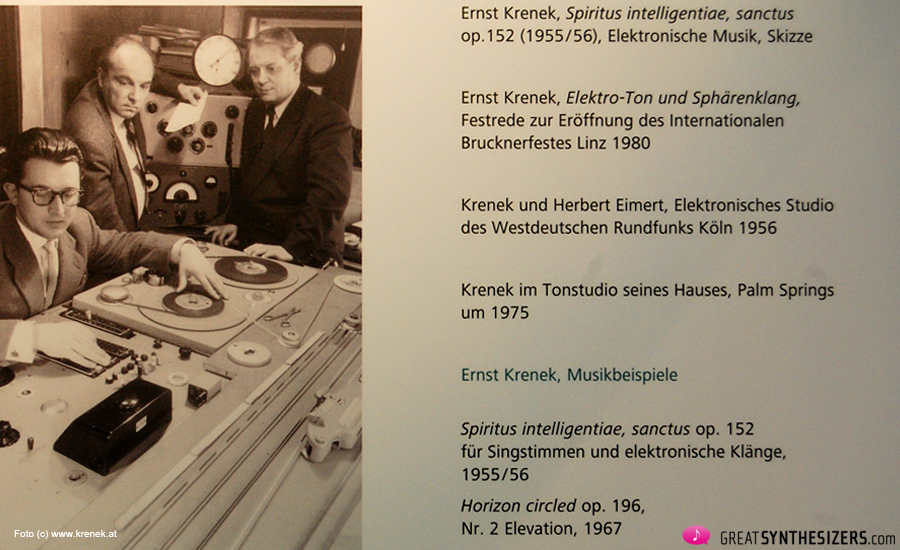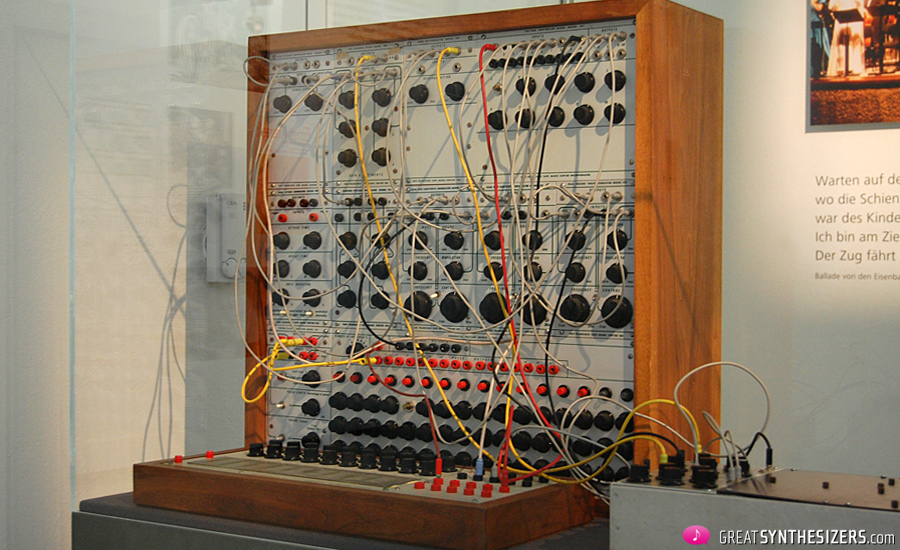As we saw in part one of our report, there is a significant amount of sound potential in Ernst Krenek’s Buchla System – all the more since it consists of two instruments. In reality, it’s twice as big as it looks. Although the Buchla 100 Series is optically no match for the Moog Modular System or the ARP 2500, it was not exactly cheap when he purchased it in 1967.
Pic: Ernst Krenek (1900-1991)
If Ernst Krenek hadn’t laid the foundation for his modest wealth many decades earlier with the opera “Jonny spielt auf”, he wouldn’t have been able to afford the Buchla. [The opera opened 1927 in Leipzig and played a total of 421 nights during its first run.]
 PIC: Piano reduction of the opera. Title picture by Arthur Stadler.
PIC: Piano reduction of the opera. Title picture by Arthur Stadler.
From the beginning of the 1940s, Krenek had been involved in Serial Music, along with Aleatoric and Electronic Music. And an invitation to the Studio For Electronic Music of the WDR in Cologne in the 1950s had initially encouraged him to establish his own electronic music studio.
“He became an American citizen in 1945. He later moved to Toronto, Canada, where he taught at The Royal Conservatory of Music during the 1950s. His students included Milton Barnes, Lorne Betts, Samuel Dolin, Robert Erickson, Halim El-Dabh, Richard Maxfield, Will Ogdon, and George Perle. He died in Palm Springs, California, where he had lived since 1966. In 1998 Gladys Nordenstrom founded the Ernst Krenek Institute; in 2004 the private foundation moved from Vienna to Krems, Austria.”
(https://en.wikipedia.org/wiki/Ernst_Krenek)
We’ll close our brief resumee of Ernst Krenek and his Buchla Synthesizer with further pictures of his instrument (and of the Buchla filter 291).
——————————————————————————–
Further Info:
Report: Ernst Krenek’s Buchla Synthesizer (Part 1)
Krenek / Wikipedia: https://en.wikipedia.org/wiki/Ernst_Krenek
Krenek Institut: www.krenek.at











